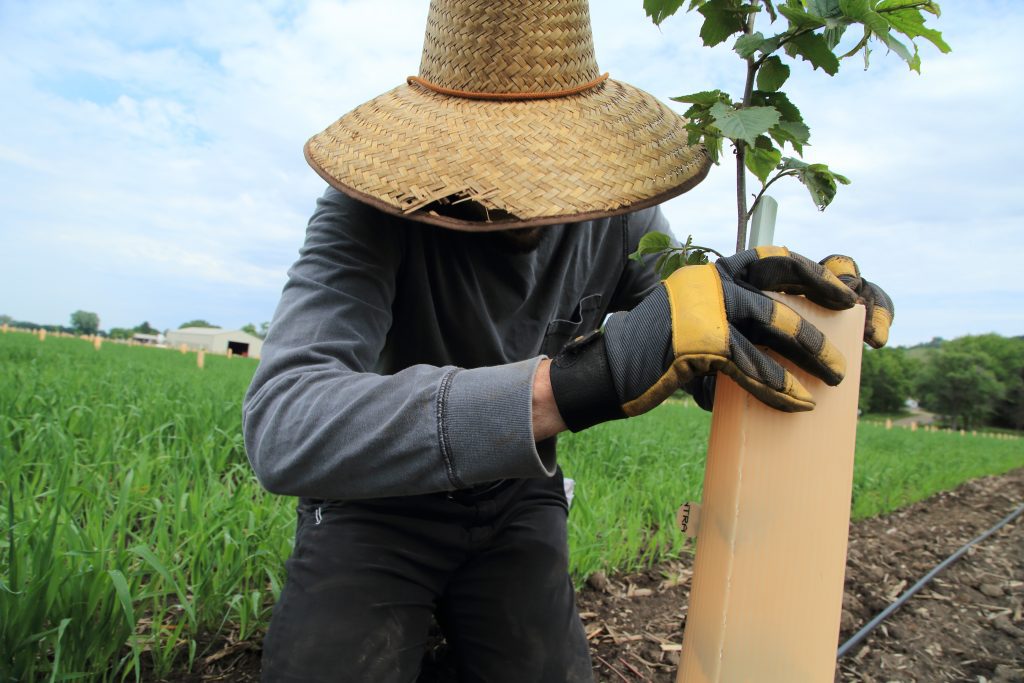Let's change the way we grow food for our communities
If you’re just getting started with planting trees or adding livestock to your farm, you need support. Our team works with partners to research and share learnings from agroforestry systems at farms throughout the Midwest. Our goal is to make sure everyone has access to the research, education, and technical assistance needed to add agroforestry to their sustainable farming practices.
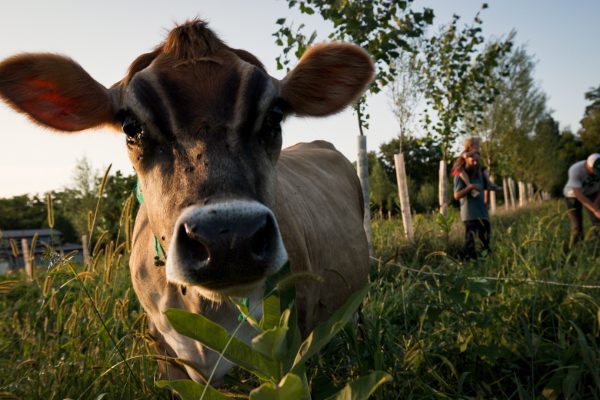

RESOURCE
Understanding Agroforestry Factsheets
Download the factsheets to learn more about agroforestry practices supported by the USDA.
- Illustrations and information introducing agroforestry practices
- Free to print for events, classrooms, or office literature
- Available in English, Spanish, and Hmong
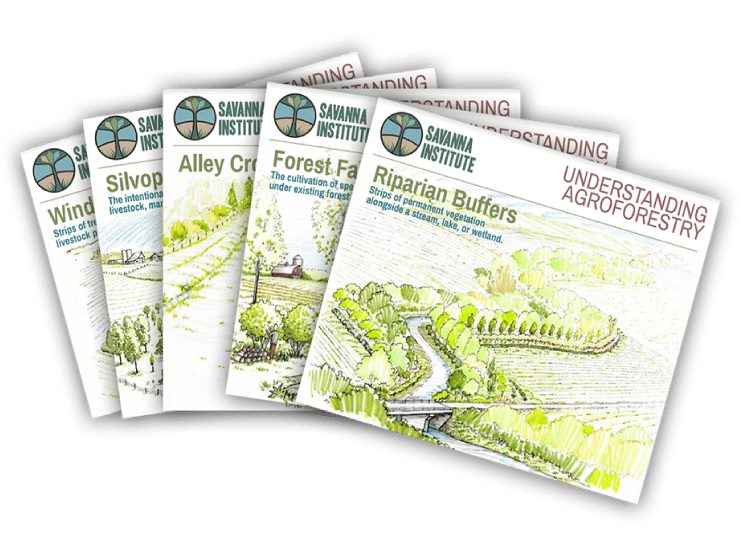
What is Agroforestry?
Sustainable, regenerative farming practices that integrate trees, crops, and livestock. There are many types of agroforestry. Five common practices include:
Alley cropping
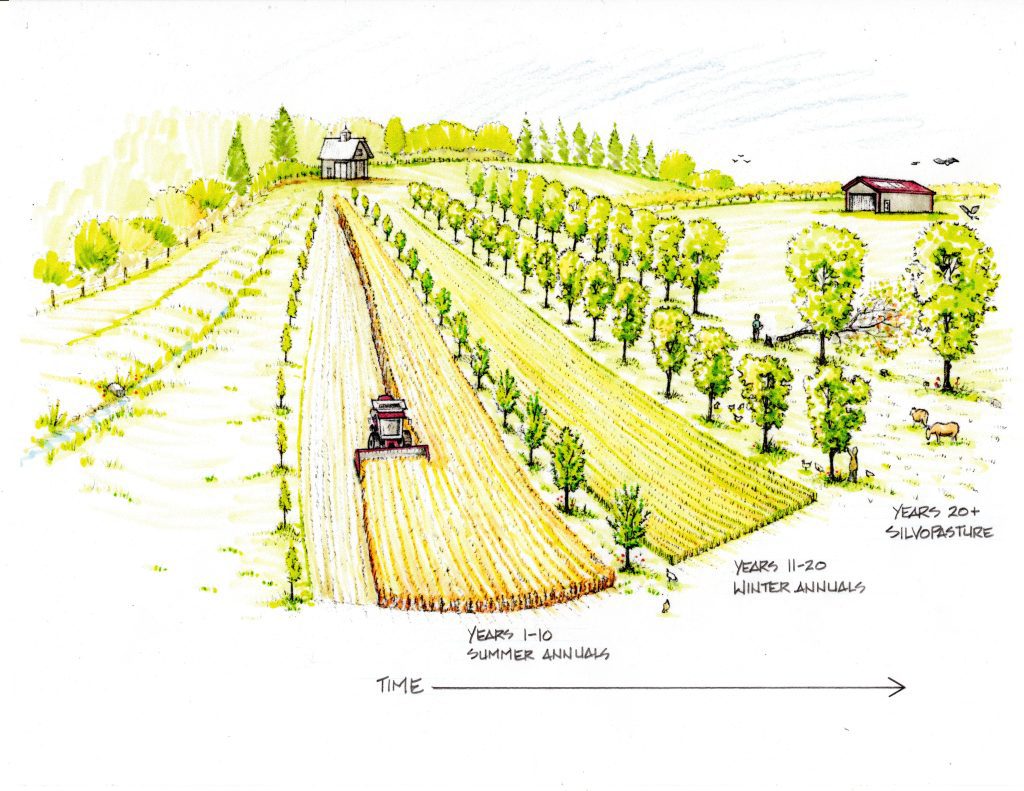
Alley cropping is the cultivation of crops in the alleys between regularly spaced rows of trees or shrubs.
Silvopasture
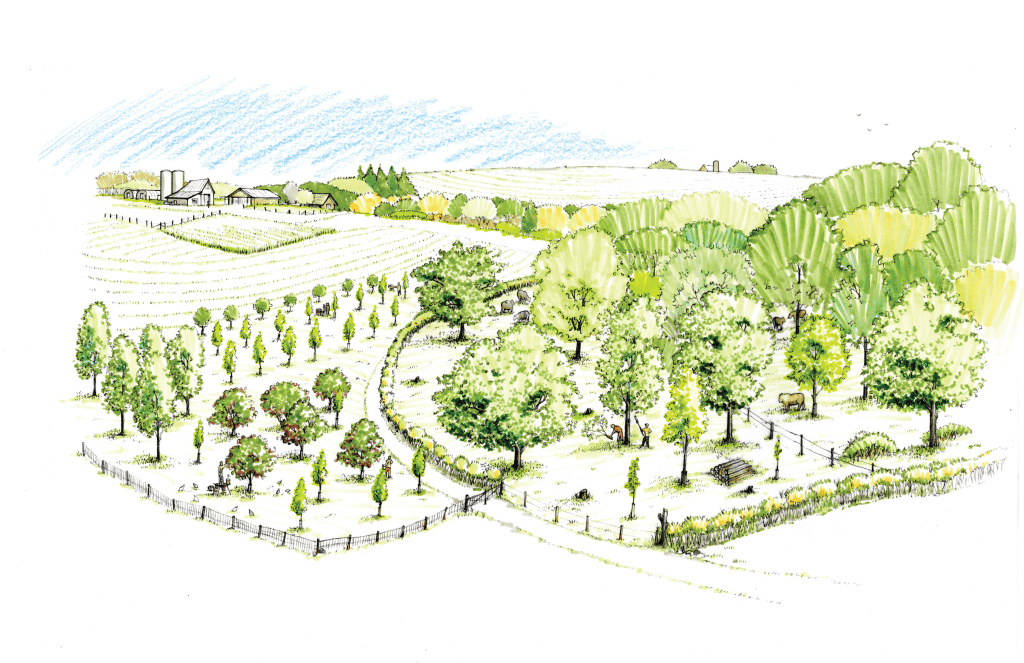
Silvopasture is the intentional integration of trees, pasture and livestock managed in a single system.
Riparian buffers
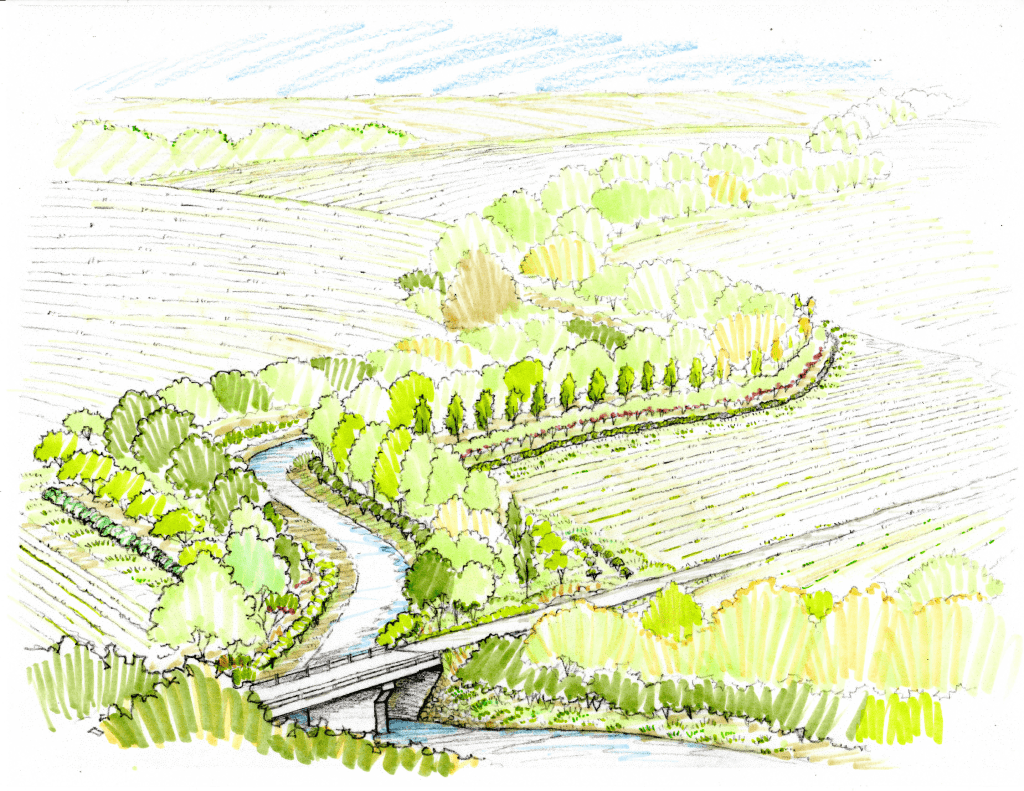
Riparian buffers are trees planted as strips of permanent vegetation alongside a stream, lake or wetland.
Windbreaks
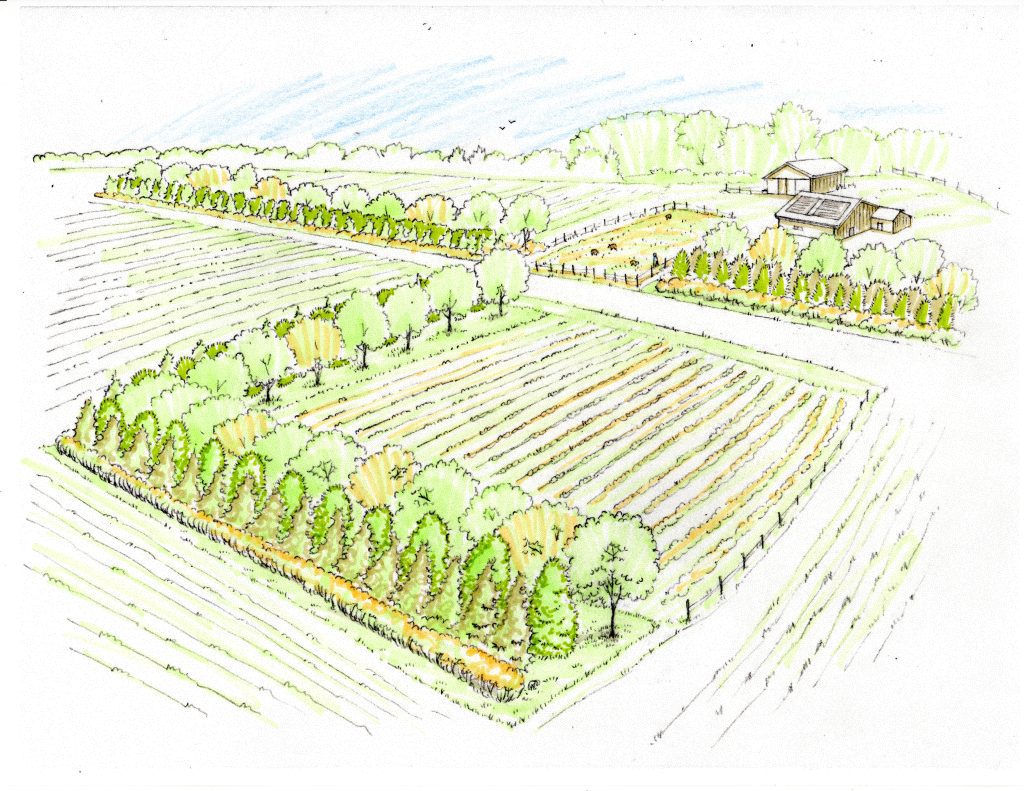
Windbreaks are strips of trees and shrubs designed to enhance crop or livestock production while providing conservation benefits.
Forest Farming
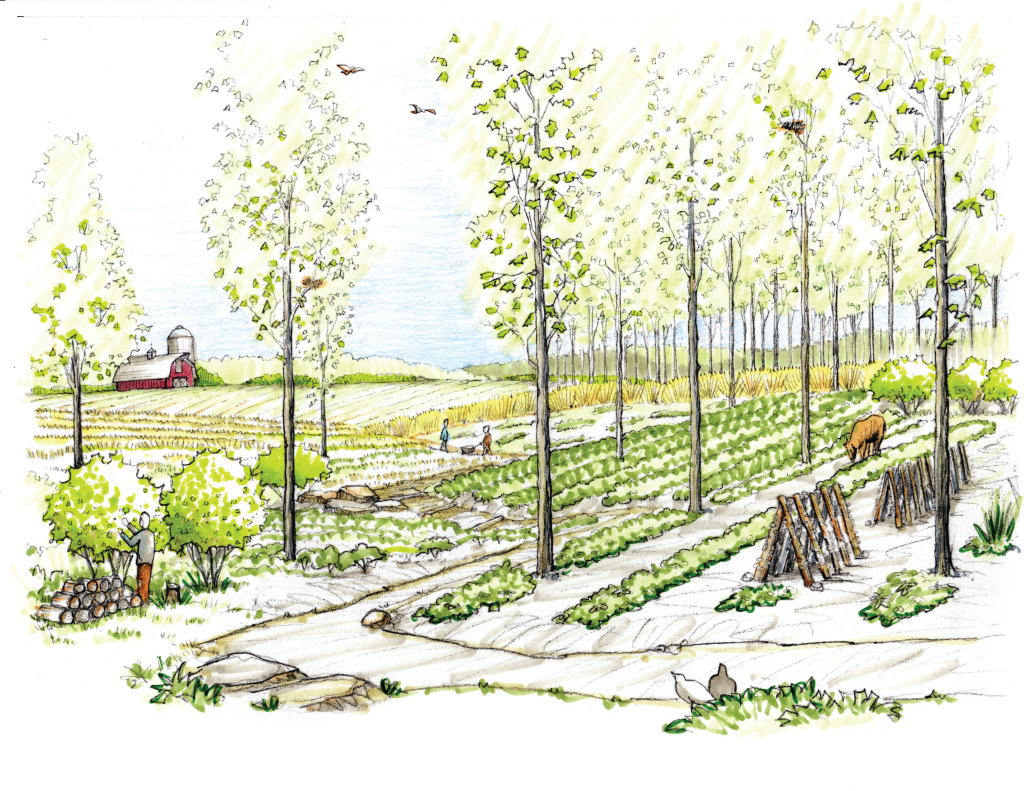
Forest Farming is the cultivation of specialty crops under existing forest canopies.

COURSE
Agroforestry Foundations for Farmers
The Agroforestry Foundations course is designed to introduce you to a diversity of agroforestry practices, financial arrangements, farm designs and business models while helping you reflect on your own personal values and goals.
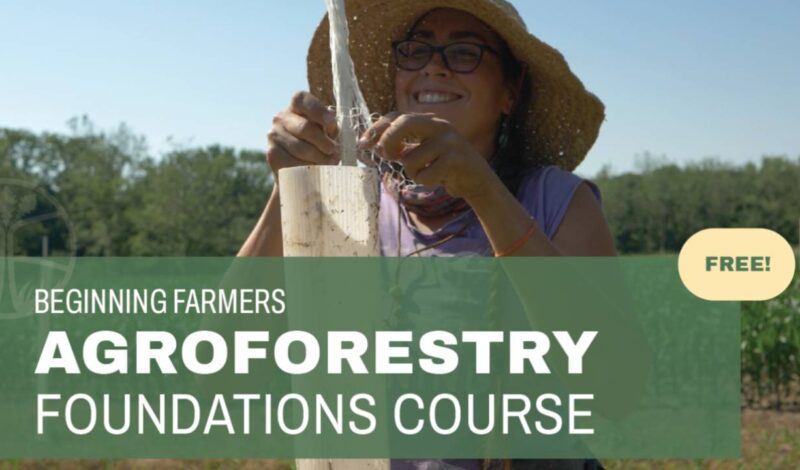
Do You Have Access to Land?
Long-term land access is a key requirement of getting started in any type of perennial agriculture. Tree crops take time to mature, and it may be years before farmers turn a profit off their harvests. We know that accessing land is not easy. Our resources help beginning farmers navigate long-term lease options.
“Yes, I have access to land.”

Assistance For Landholders
Technical Service Program
Savanna Institute’s Technical Service Program helps you take advantage of resources available to plant trees on your pastures, fields, and waterways. Technical Service Providers offer one-on-one support for planning, designing, and securing financial assistance for an agroforestry system.
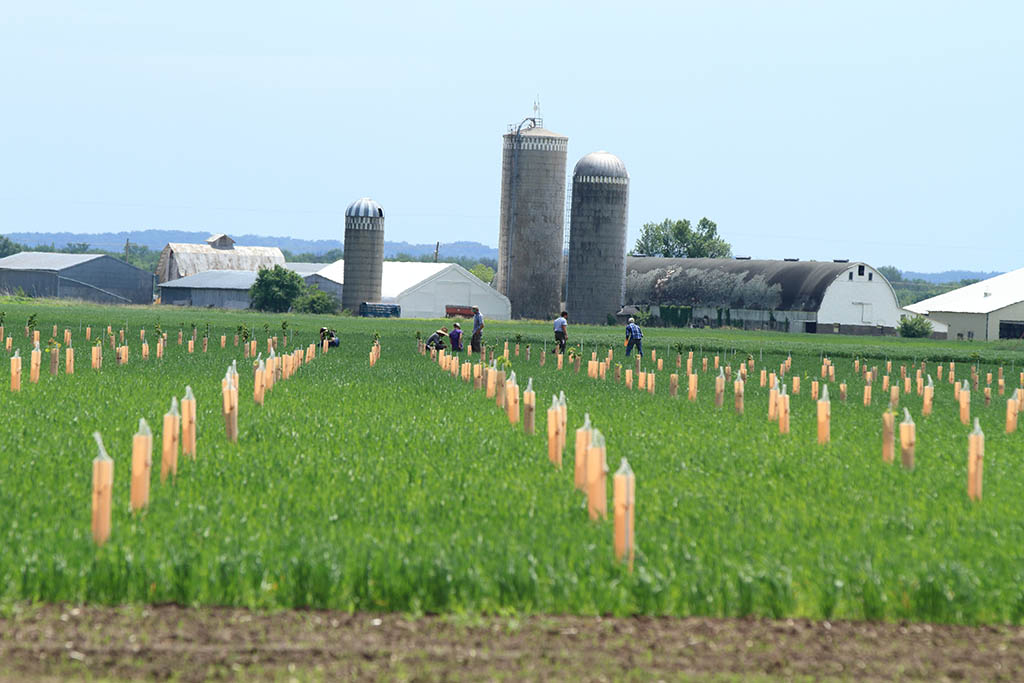
Explore the Crops
Are you interested in growing perennial crops? We research and develop a select group of perennial crops that are well-suited to the oak savanna ecosystem that is native to the Midwest.
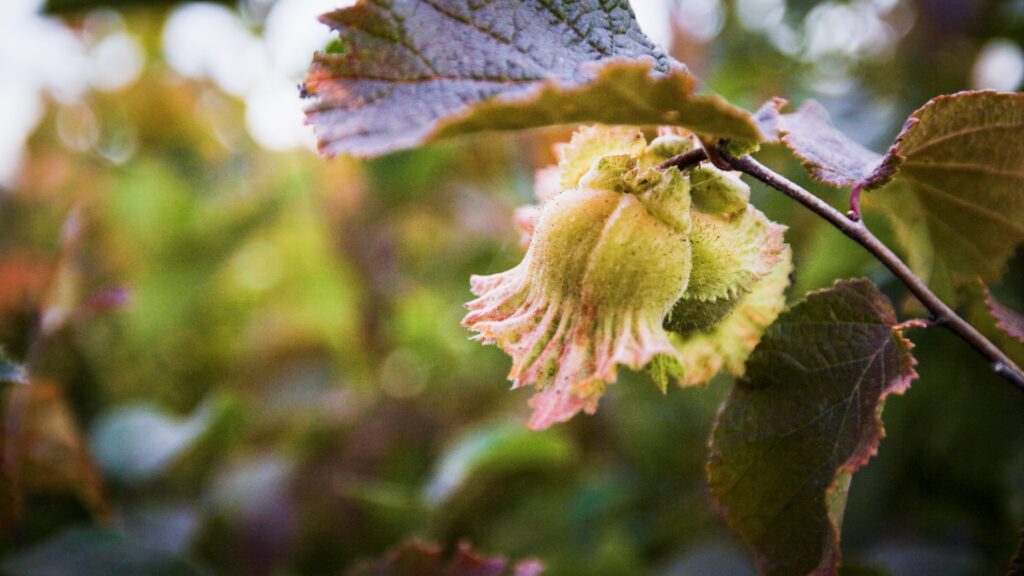
“No, I don't yet have access to land.”
Resources for Leasing Farm Land
If you do not have access to land, check out the materials we publish to guide you in starting a long-term lease negotiation with a landowner.
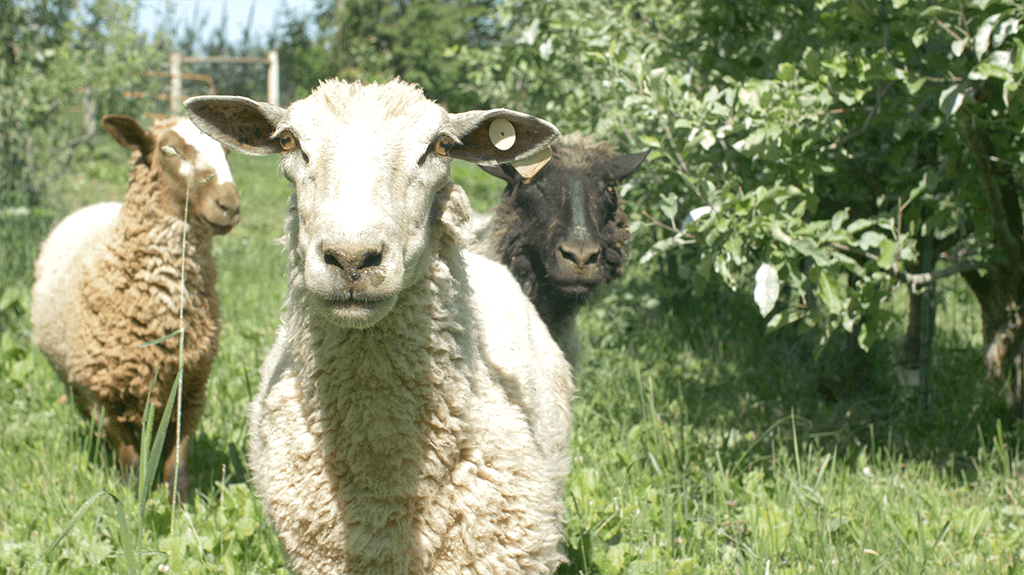

RESOURCE
Long-Term Lease Interactive Guide
Download the guide to learn more about leasing agricultural land.
- Step-by-step advice for beginning a long-term lease negotiation
- Breaks down legal jargon in an easy to follow format
- Contents developed by legal consultants at Farm Commons
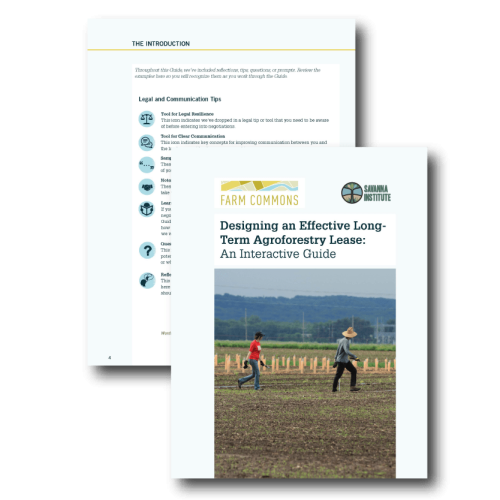
Do you have a question?
Ask an Agroforester
Our partners at Canopy Farm Management, based in Illinois and Wisconsin, have perennial plant material available through its bare-root nursery. When you purchase through Canopy, a portion of the sales help to support Savanna Institute’s nonprofit mission. For more nurseries in your area, check out this National Nursery and Seed Directory.
The plants you choose will depend on the natural resources on your land and your farm goals. Timber trees require low investment and minimal ongoing maintenance over a longer period of time ranging 20 to 50 years depending on species. Fruit and nut trees require higher initial investment and establishment maintenance, but can provide annual returns once established (approximately 5 to 10 years depending on species). Additional shrubs and crops can be planted within the tree rows between tree species. Learn more about perennial crops.
The Savanna Institute runs demonstration farms in Central Illinois and Southern Wisconsin. We also have partners in Michigan and Minnesota who share their farms for educational events. Our demonstration at Silverwood Park in Wisconsin is open to the public, and the rest are open during events and by appointment only. Learn more about our demonstration farms.
